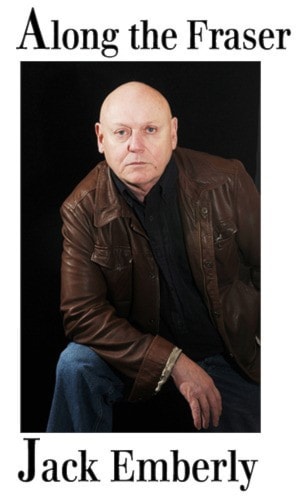“It’s a lie ... what people call ditches – those were streams,” said former Conservative fisheries minister John Fraser, alluding to the federal government’s dismissal of little streams as ditches unworthy of protection in the Fisheries Act.
On CBC’s Almanic, May 30, Fraser insisted small stream destruction “has resulted in a 70-90 per cent habitat loss.”
Kudos for putting truth before party loyalty.
All salmon, even lake spawning sockeye, rear in nameless streams, a fact conveniently ignored by developers, municipalities, farming, oil and gas developers like Enbridge, and even the Cohen Commission Inquiry.
Without habitat, there’s no fish; no Canada as we know it.
Still, current minister Keith Ashfield guts protection because it “has kept farmers from cleaning out their ditches for up to two years.”
That’s “foolish,” said Fraser.
In Maple Ridge, Cliff Olson, an avid fly fisherman, has always known that.
Olson volunteers with the ARMS adopt-a-stream program. In March, he helped identify coho and steelhead fry in Morse Creek.
Cliff set fish traps, reverently avoiding gravel that contain alevin.
Morse has endured road run-off, detergents from fire halls, and rechanneling at 224th Street and Abernethy Way.
To him, it is not a ditch.
Nor are the unheralded streams and sloughs along the Harrison River, the source of hundreds of thousands of salmon (all five species) between Mission and Agassiz.
Spawning area in the Harrison totaling 176,000 square yards (fisheries data, Report 133, 1979) occurs in places the average person would never notice.
Chehalis Flats, for example, is east on Morris Valley Road, off Lougheed Highway near Harrison Mills. This maze of marshy channel on the Harrison’s eastern bank is the major chum producer in B.C.
Upstream is Weaver Creek. Each fall, buses of Chinese tourists pass the flats on route to the spawning channel. The fish arrive via Morris Slough, another branch of the Harrison well known by Olson, who’s explored the river for 30 years.
“Of all the sockeye runs in B.C., these are unique because they come down from the outside of Vancouver Island,” Olson noted on the day he showed me his favourite fishing spots.
We launched under Harrison Bridge, where a sign reads, “Put fee in little red box.”
Local humor, Olson says as he slips coins into a slot.
Ten minutes later, near the confluence of the green Harrison, and muddy Fraser, we pull into shore. Near the shoreline, Olson found fry.
“Pink salmon,” he says. “No parr marks along the side, silver color. Good sign, lots of them this year.”
We’d cast pink fry patterns into eddies upstream of the bridge near French Creek. As we approached the spot, Olson slowed for a pair of geese with a gosling.
“First of the season,” he remarks, noting osprey nests atop pilings set in the river.
“A family of otter up here, too,” he said.
“Came up to my boat. Fish are their diet. They could all be hurt by development.”
It’s a good point. A golf course stretching along the west bank can be seen from the bridge. On the bank at French Creek, there’s a trailer park. I wonder if the DFO had been part of the approval process.
In 1977, the fisheries department strove to enhance spawning areas in the Harrison. Gravel was removed, washed, and replaced not far from here (Smokehouse Slough).
With changes to the act, that effort will be subject to the adverse effects of developments.
Olson says he’s concerned about waterways on both sides of the Harrison.
“I don’t even know the names of most of them,” he says, “but they’re all instrumental in the returns to the river, the lake and beyond.”
There’s a pool beyond Chehalis that Olson says harbours cutthroat, but the one big fish I hook into gets away. It doesn’t matter. My fly casting has improved thanks to my guide.
“I’d hate to see a mall down the side of this river,” he says, “but everything’s possible. It could all be destroyed without difficulty.”
A lot of folks are standing up for rivers like the Harrison and tiny streams in the face of draconian legislation like Bill C-38.
I tell Olson: “Joe Jurcich is mentoring McKenney Creek. ARMS plans to help him clear out invasive plants. Kids at Harry Hooge school are stewarding Balabanian.”
“That’s all great,” he says. “Getting kids started on that is the name of the game.”
On the Ridunkulist: Snakehead (Fishzillas) fish infest U.S. rivers because an Asian man believed it was good luck to release two.
The market that sold them was fined $200,000. In B.C., you can buy live snakeheads – no law against it.
Conservative MP David Wilks is on the list for flip-flopping. Wilks broke ranks with the government on May 22, saying Bill C-38 should be discussed. Former fisheries minister Herb Dhaliwal says committee reports, debate in the House – democracy – was ignored. One day after Wilks broke ranks, he recanted. “I support this bill ...”
Why?
“One person is not going to make a difference,” rationalized the MP.
Tell that to folks like Cliff Olson.
Jack Emberly is a retired teacher, local author and environmentalist.
